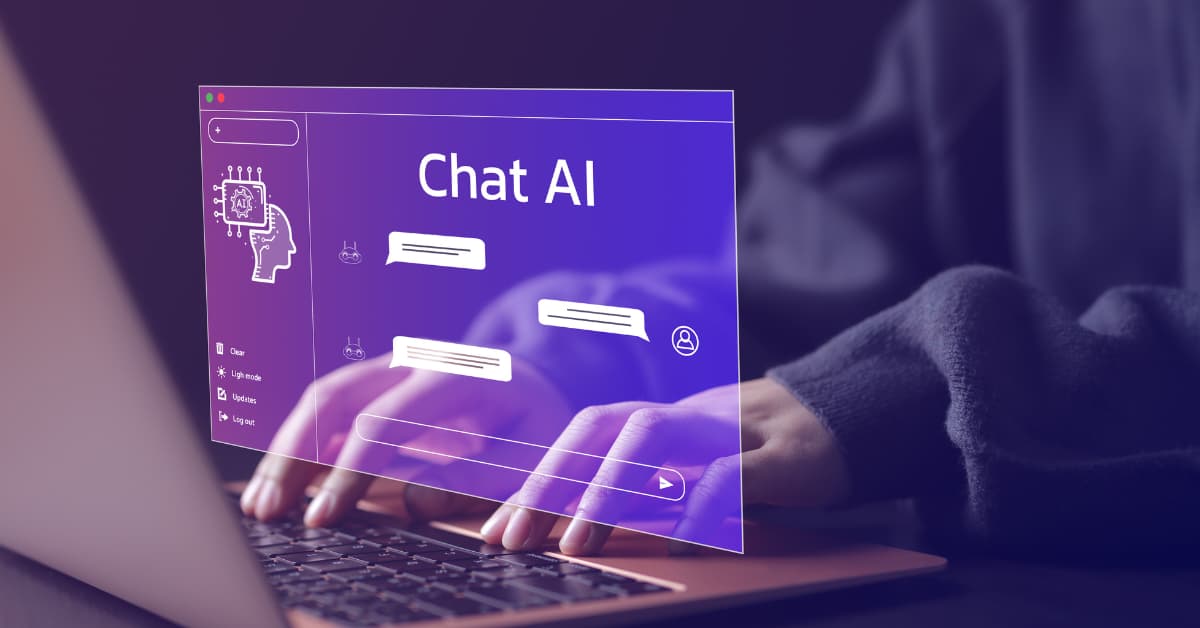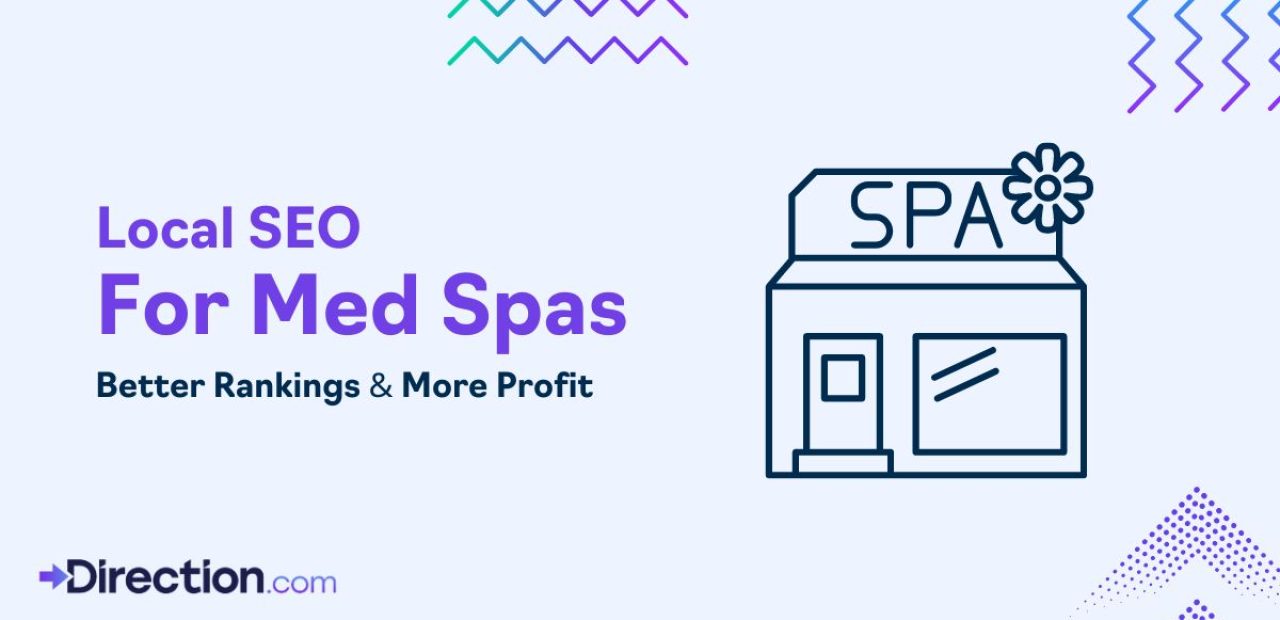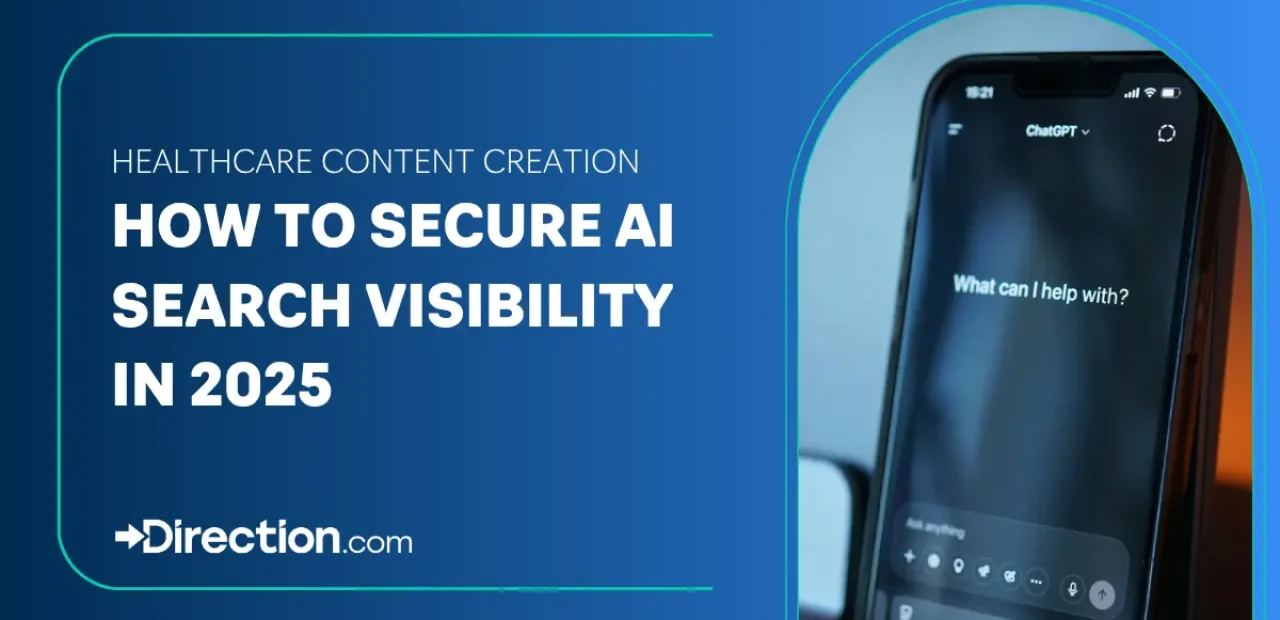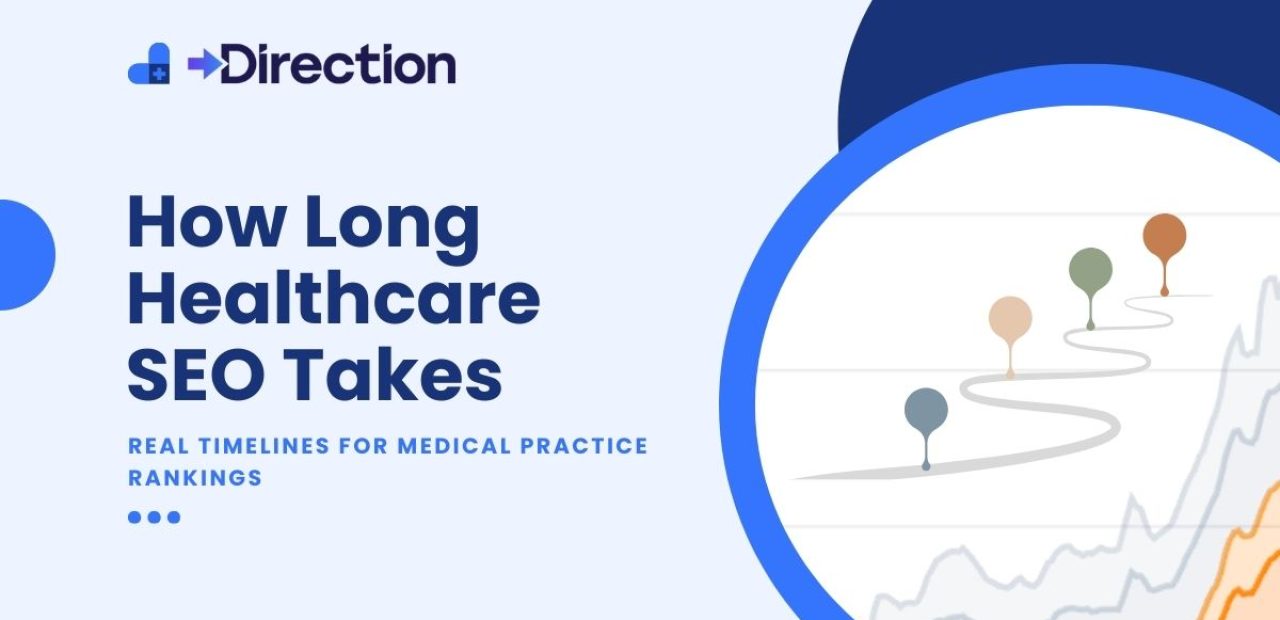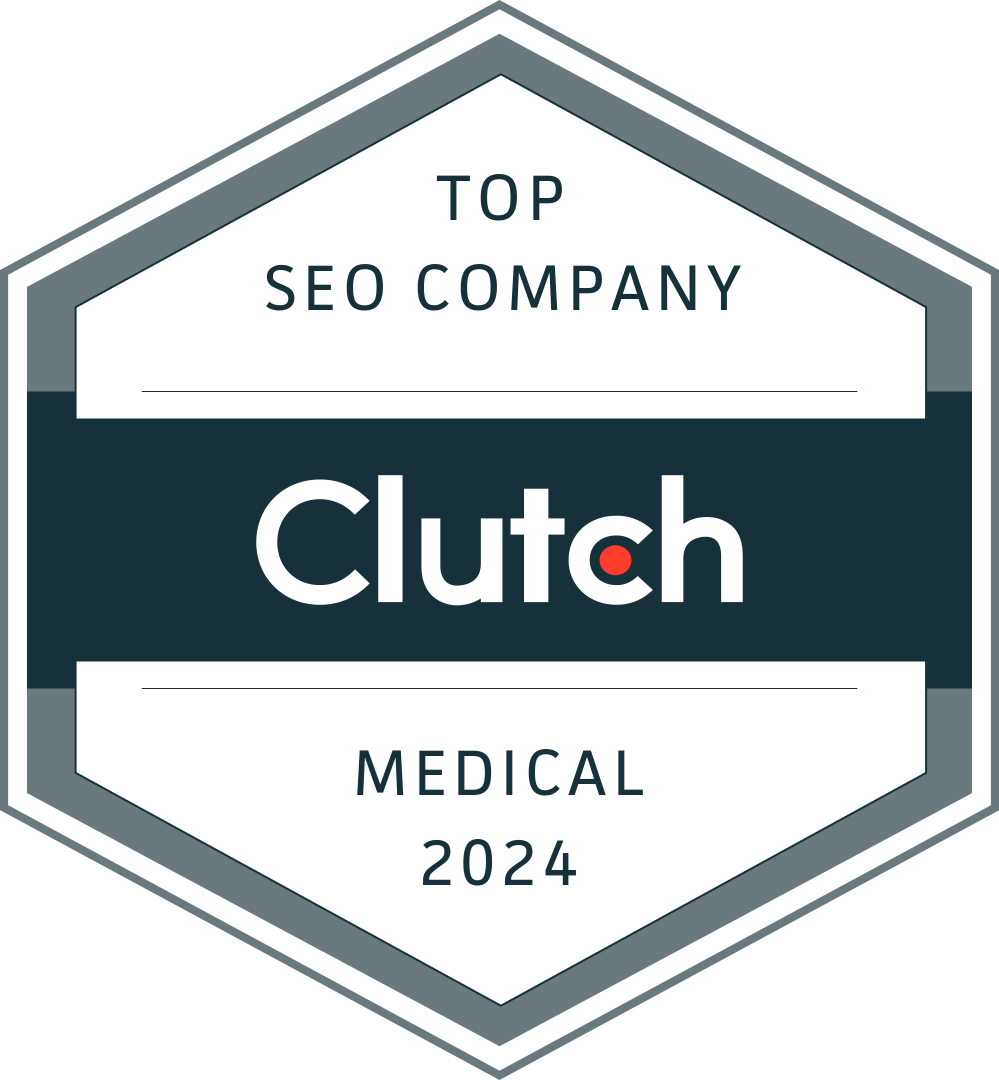It’s not competition from the hospital down the street. It’s the realization that their million-dollar SEO investments might be worthless if patients can’t find them on ChatGPT, Perplexity, or Google’s AI overviews.
But here’s what I’ve discovered after helping 50+ healthcare organizations crack the AI visibility code: the same expertise that makes you an exceptional provider can make you irresistible to AI systems – if you know how to package it.
Picture this: by 2030, 80% of initial healthcare searches will happen through AI assistants. That’s not speculation – it’s the trajectory we’re on based on current adoption rates.
The practices thriving then won’t be those with the biggest marketing budgets. They’ll be the ones who understood early that AI search optimization isn’t just another marketing tactic – it’s a fundamental shift in how patients discover and choose healthcare providers.
And the window to establish AI authority is closing faster than most executives realize.
Understanding the Shift from Google to AI-Powered Discovery
You might be thinking, “We’ve dominated Google for years – isn’t that enough?” I understand the skepticism. Your SEO agency promises top rankings, your analytics show steady traffic, yet something feels off. Here’s why: the game has fundamentally changed. ChatGPT, the platform is getting more popular, growing from 2.8 billion visits in April 2024 to 5.2 billion visits in February 2025. That’s not gradual adoption – that’s a seismic shift in how people seek information, especially about their health.
The healthcare industry sits at a unique crossroads. Unlike buying shoes or booking hotels, healthcare decisions carry life-altering weight. When patients ask AI about symptoms, specialists, or treatment options, your absence isn’t just a missed marketing opportunity – it’s a failure to guide critical health decisions. Traditional SEO made you findable; AI search optimization makes you recommendable. And in healthcare, recommendations drive decisions.
The Numbers Every Healthcare Executive Should Know
Let me share the metrics that should reshape your digital strategy:
- 5.2 billion monthly visits: ChatGPT’s current traffic, nearly doubling in under a year
- 58% of consumers: Now turn to AI tools for product and service recommendations
- 1,300% surge: In AI search referrals during the 2024 holiday season
- 40% visibility boost: Possible through proper Generative Engine Optimization
- $100 billion annually: AI’s potential contribution to US healthcare
These aren’t just statistics – they represent millions of patient journeys that might never intersect with your practice if you’re not optimized for AI discovery. Every percentage point of AI market share represents thousands of potential patients choosing providers based on AI recommendations.
How Patients Really Find Healthcare Providers in 2025
Forget what you know about patient search behavior. Today’s healthcare discovery looks radically different. Instead of typing “cardiologist near me” into Google, patients have conversations with AI. They ask: “I’ve been having chest pains after exercise – should I see a cardiologist? Who’s the best in Miami for someone with my symptoms?”
Searchers are using longer, more specific queries that start a “conversation” rather than the concise, keyword-focused queries we’ve historically seen. This conversational shift demands a complete rethinking of how we structure and present healthcare information. Patients expect nuanced, personalized responses that traditional SEO pages simply can’t deliver.
The implications are profound. AI-first search tools like ChatGPT are shifting how users find healthcare information. Marketing strategies must evolve to remain competitive. Your carefully crafted service pages might rank perfectly on Google, yet never appear in the AI responses where increasingly sophisticated patients make their healthcare decisions.
The True Cost of AI Invisibility for Your Practice
Let’s translate AI invisibility into real numbers. If your practice typically sees 100 new patients monthly, and 58% now use AI for healthcare decisions, you’re potentially missing 58 patient opportunities every month. At an average lifetime patient value of $5,000-$15,000 (depending on specialty), that’s $290,000 to $870,000 in annual revenue at risk – and growing.
But the cost extends beyond direct revenue. When competitors appear in AI responses and you don’t, you’re implicitly positioned as less authoritative, less current, less relevant. This reputational impact compounds over time. Patients who discover competitors through AI develop trust before even visiting a website. They arrive pre-sold on that provider’s expertise because an AI they trust recommended them.
Consider the referral multiplier effect. Satisfied patients typically refer 2-3 others. If AI invisibility costs you 58 patients monthly, you’re actually losing 174-232 potential patients when accounting for referrals. For specialty practices, where referrals drive 40-60% of new patients, AI invisibility creates a compounding negative effect that traditional marketing can’t overcome.
The Big Three: ChatGPT, Perplexity, and Google AI Overviews
Understanding AI platforms isn’t about technical minutiae – it’s about knowing where your patients go for health information and how these platforms decide who to recommend. Let me break down the “Big Three” platforms reshaping healthcare discovery, stripped of jargon and focused on what matters for your practice.
ChatGPT – The Conversational Giant
ChatGPT has become the default AI assistant for millions, and its approach to healthcare information should concern every provider. ChatGPT shows a clear preference for Wikipedia, which accounts for nearly half (47.9%) of its top citations. Think about that – when patients ask about medical conditions or treatments, Wikipedia often shapes the response more than your expertly crafted content.
But here’s the opportunity: When prompted about its sources, ChatGPT consistently said it “referred to a variety of sources that provide comprehensive reviews and ratings based on patient experiences, expert opinions, and hospital affiliations.” Often these included Healthgrades, U.S. News & World Report, Vitals and Zocdoc. This means your presence on third-party healthcare platforms matters as much as your website – perhaps more.
ChatGPT excels at natural conversation, making it particularly powerful for complex health queries. Patients don’t just ask “what” – they explore “why,” “how,” and “what if.” Your content strategy must evolve to address these multifaceted conversations, not just target keywords.
Perplexity – The Research Powerhouse
While ChatGPT focuses on conversation, Perplexity positions itself as a research assistant. Perplexity shows a unique concentration in community platforms… Reddit concentration suggests heavy reliance on community discussions. For healthcare providers, this presents both challenges and opportunities.
Perplexity users often seek detailed, evidence-based information. They’re comparing treatment options, researching specialists, and validating medical advice. The platform’s research-first approach makes it particularly valuable for academic and professional work. Healthcare providers who create comprehensive, well-researched content with clear citations have a natural advantage on this platform.
The key to Perplexity visibility? Depth and credibility. Surface-level content won’t cut it. Perplexity rewards comprehensive resources that answer not just the primary question but anticipate follow-up queries. Think of it as writing for the most curious, well-informed patient you’ve ever treated.
Google AI Overviews – The Game Changer
Google’s AI Overviews represent the most significant shift in search since the company’s founding. AI Overviews boost smaller sites: It can be hard – or impossible – to beat out sites like Mayo Clinic, Cleveland Clinic and WebMD to rank for broad, health-related queries. But sources cited in the AI Overview often don’t overlap with the top-ranked sites.
This levels the playing field dramatically. Your local practice can appear alongside national healthcare brands in AI-generated summaries. But success requires understanding what Google’s AI values: comprehensive topic coverage, clear structure, and authoritative information that directly answers user intent.
Google AI Overviews shows a more balanced distribution across platforms… Higher emphasis on professional content (LinkedIn, Gartner). This suggests that establishing thought leadership on professional platforms directly impacts your AI visibility – a connection many healthcare providers haven’t yet made.
From SEO to GEO: What Healthcare Leaders Need to Know
Traditional SEO is giving way to Generative Engine Optimization (GEO), focusing on creating content optimized for AI-driven platforms. I know – another acronym in an industry drowning in them. But GEO isn’t just rebranded SEO; it’s a fundamental shift in how we think about digital visibility. Where SEO optimizes for algorithms, GEO optimizes for AI understanding. Where SEO targets keywords, GEO targets conversations.
The distinction matters because AI systems don’t just match keywords – they comprehend context, evaluate expertise, and synthesize information from multiple sources to generate responses. Your practice might rank #1 for “orthopedic surgeon Dallas,” but if AI doesn’t understand your expertise, specialized procedures, or patient success stories, you’ll remain invisible in AI-generated recommendations.
The Core Differences Between Traditional SEO and GEO
Let me break down the key distinctions that should reshape your digital strategy:
Search Intent vs. Conversation Flow: SEO optimizes for specific search queries. GEO prepares for dynamic conversations where patients explore topics, ask follow-ups, and seek nuanced understanding. Your content must anticipate the entire patient journey, not just the entry point.
Keywords vs. Semantic Understanding: Traditional SEO focuses on keyword placement and density. GEO requires semantic richness – surrounding core concepts with related terms, examples, and context that help AI understand the depth of your expertise.
Page Rankings vs. Information Synthesis: SEO aims to rank individual pages. GEO ensures your entire digital presence contributes to AI’s understanding of your authority. Every piece of content, third-party mention, and professional credential feeds into AI’s recommendation algorithm.
Click-Through vs. Zero-Click Value: SEO success meant driving clicks to your website. GEO succeeds when AI accurately represents your expertise, even if patients never visit your site directly. This “zero-click” value translates into branded searches, direct appointments, and referral requests.
Why Healthcare is Uniquely Positioned for GEO Success
Here’s what most healthcare executives don’t realize: you’re already sitting on a GEO goldmine. Healthcare’s natural advantages align perfectly with what AI systems value most. Your clinical expertise, patient outcomes, peer recognition, and ethical standards – these aren’t just professional attributes; they’re GEO ranking factors.
Consider what AI platforms prioritize when generating healthcare recommendations:
- Expertise and Credentials: Your board certifications, fellowships, and specialized training
- Authoritative Content: Evidence-based information backed by clinical experience
- Trust Signals: Patient testimonials, peer endorsements, hospital affiliations
- Comprehensive Coverage: Addressing conditions, treatments, and outcomes holistically
- Ethical Transparency: Clear information about risks, alternatives, and limitations
You already possess these elements. GEO simply requires packaging them in ways AI systems can understand, interpret, and confidently recommend to patients seeking care.
Building Your GEO Foundation
Constructing a GEO-optimized presence doesn’t require abandoning your current digital assets – it means enhancing them for AI comprehension. Start with these foundational elements:
Conversational Content Architecture: Transform your rigid service pages into dynamic resources that answer real patient questions. Instead of “Knee Replacement Surgery,” create content addressing “What should I expect during knee replacement recovery?” or “How do I know if I need knee replacement?”
Semantic Entity Optimization: Establish clear connections between your providers, specialties, conditions treated, and outcomes achieved. AI needs to understand not just that Dr. Johnson is an orthopedic surgeon, but that she specializes in sports medicine, particularly ACL reconstruction for athletes, with a focus on minimally invasive techniques.
Multi-Platform Authority: Your website alone won’t establish AI visibility. Maintain consistent, comprehensive profiles on healthcare platforms, contribute to medical discussions on LinkedIn, and ensure your physicians engage professionally online. Every touchpoint feeds AI’s understanding of your authority.
Evidence-Based Depth: Surface-level content won’t suffice. AI rewards comprehensive resources that demonstrate genuine expertise. Share anonymized case studies, discuss treatment innovations, explain your clinical decision-making process. Show AI systems why you’re not just another provider, but the right choice for specific patient needs.
Your 90-Day AI Search Optimization Action Plan
Transformation seems daunting until you break it into manageable phases. I’ve guided dozens of healthcare organizations through this transition, and the most successful follow a structured 90-day implementation plan. This isn’t about perfection – it’s about progression. Each phase builds on the previous, creating momentum that transforms your digital presence from AI-invisible to AI-essential.
Phase 1: Assessment and Quick Wins (Days 1-30)
Week 1-2: Baseline Your AI Visibility
Start by understanding your current AI presence. Create a list of 50 common patient questions in your specialty. Test these across ChatGPT, Perplexity, and Google AI. Document where you appear, how you’re described, and which competitors dominate. This baseline becomes your benchmark for progress.
Quick Win Actions:
- Update Third-Party Profiles: Keeping provider profiles updated on third-party platforms like Healthgrades and Zocdoc is crucial
- Physician Bio Optimization: Rewrite provider bios conversationally, highlighting specializations and patient approaches
- FAQ Enhancement: Add 10-15 detailed FAQs to key service pages, using natural patient language
- Google Business Profile: Ensure complete optimization with posts, Q&As, and current information
Week 3-4: Content Audit and Prioritization
Evaluate existing content through an AI lens. Which pages answer real questions? Which read like keyword-stuffed brochures? Prioritize updating your highest-traffic pages first, transforming them from static information to dynamic conversations.
Phase 2: Content Transformation (Days 31-60)
Week 5-6: Conversational Content Creation
Begin transforming your core service pages. For each specialty or condition, create content that:
- Addresses the Complete Patient Journey: From symptoms to diagnosis to treatment to recovery
- Uses Natural Language: Write as you’d explain to a concerned family member
- Includes Real Examples: Anonymized patient scenarios that illustrate key points
- Anticipates Follow-Up Questions: Structure content to address related concerns
Week 7-8: Multi-Format Content Development
AI platforms increasingly value multimedia content. Develop:
- Educational Videos: 2-3 minute explanations of common procedures
- Infographics: Visual representations of treatment processes
- Podcast Episodes: Discussions about health topics in your specialty
- Interactive Tools: Symptom checkers or treatment comparisons
Remember: Rich visuals: Infographics, videos and images can boost visibility in the AI Overview and Perplexity responses.
Phase 3: Authority Building (Days 61-90)
Week 9-10: Professional Platform Optimization
Expand beyond your website to establish multi-platform authority:
- LinkedIn Thought Leadership: Publish weekly articles on healthcare trends
- Medical Platform Participation: Contribute to Doximity, Figure 1, or specialty forums
- Academic Presence: Ensure publications and research are properly attributed
- Speaking Engagements: Document and share conference presentations
Week 11-12: Measurement and Optimization
Return to your baseline queries. Test again across AI platforms. Document improvements, identify gaps, and refine your approach. Successful AI optimization is iterative – each cycle reveals new opportunities for visibility enhancement.
Resource Allocation Guidelines:
- Budget: Allocate 20-30% of current SEO budget to GEO initiatives
- Team Time: Dedicate 5-10 hours weekly for content transformation
- External Support: Consider specialized GEO consultants for technical implementation
- Technology: Invest in tools for AI visibility tracking and content optimization
Tracking Your AI Search Performance: Metrics That Matter
You can’t manage what you don’t measure, yet most healthcare organizations have no idea how they perform in AI search results. Traditional analytics tell you about website traffic, but remain blind to AI visibility. When patients discover you through ChatGPT’s recommendation but search your name directly, Google Analytics shows a branded search – not the AI influence that drove it.
Measuring AI search performance requires new thinking, new metrics, and often, manual processes that feel primitive compared to automated SEO tools. But the insights gained justify the effort. Understanding your AI visibility isn’t just about vanity metrics – it’s about tracking the future of patient acquisition.
Beyond Traditional Analytics – New KPIs for AI Visibility
Share of Model (SOM): This emerging metric measures how frequently your practice appears in AI responses for relevant queries. Unlike traditional Share of Voice, SOM captures your visibility across AI platforms. Calculate it by testing 50-100 common patient questions monthly, noting your appearance frequency versus competitors.
AI Citation Quality Score: Not all mentions are equal. Develop a scoring system:
- Primary Recommendation (3 points): AI suggests you as the top choice
- Secondary Mention (2 points): Listed among several options
- Indirect Reference (1 point): Mentioned in context but not recommended
Zero-Click Brand Lift: Track the correlation between AI platform growth and your branded search increases. If ChatGPT visits grow 20% monthly and your branded searches increase 15%, you’re likely capturing AI-driven discovery.
Patient Attribution Tracking: Train intake staff to ask: “How did you hear about us?” Add “AI recommendation” as an option. Track mentions of ChatGPT, Perplexity, or “an AI suggested you.” This human intelligence often reveals AI influence that analytics miss.
Calculating the ROI of AI Search Optimization
CFOs want hard numbers, not hypothetical future value. Here’s how to build a compelling ROI model for AI search investment:
Baseline Metrics:
- Current new patient volume: 100/month
- Average patient lifetime value: $8,000
- Current patient acquisition cost: $200
- AI platform users in your market: 58%
Opportunity Calculation:
- Potential AI-influenced patients: 58/month
- Conservative capture rate: 20%
- New patients from AI optimization: 12/month
- Annual revenue opportunity: $1,152,000
Investment Analysis:
- GEO implementation cost: $50,000
- Ongoing optimization: $5,000/month
- Total first-year investment: $110,000
- ROI: 947% (Conservative estimate)
Conservative estimates suggest every dollar invested in LLM optimization returns $4-8 within 12 months – and unlike PPC, these returns grow over time. As AI platforms expand and patient adoption accelerates, early optimization investments compound exponentially.
Preparing for Voice AI and Autonomous Agents
If you think ChatGPT’s growth is impressive, wait until you see what’s coming. Voice AI assistants specifically trained for healthcare are entering the market. Autonomous AI agents that can schedule appointments, verify insurance, and even conduct preliminary symptom assessments are in development. The practices positioning themselves now for these emerging platforms will dominate patient acquisition in 2030.
Voice search changes everything about content optimization. Patients won’t type queries – they’ll have conversations with AI assistants. “Hey AI, my knee hurts when I climb stairs, and I’m worried about surgery. What are my options?” Your content must be structured to answer complex, conversational queries that blend symptoms, concerns, and treatment preferences.
Consider how Alexa, Siri, and Google Assistant are evolving. Soon, they’ll provide detailed health guidance, recommend specialists, and even book appointments. Practices optimized for voice AI will capture patients at the moment of need, while others remain invisible to these powerful intermediaries.
Action Items for Voice AI Readiness:
- Conversational Content Depth: Create content that answers complete thought processes, not just keywords
- Local Voice Optimization: Ensure your practice appears for “near me” voice queries
- Structured Data Enhancement: Implement speakable schema markup for voice-friendly content
- Natural Language FAQs: Write answers exactly as you’d speak them aloud
The autonomous agent revolution will be even more transformative. Imagine AI agents that understand patient insurance, preferences, and medical history, then automatically match them with appropriate providers. These agents will evaluate your expertise, availability, and patient outcomes to make recommendations. Practices without strong AI visibility won’t even enter the consideration set.
Executive Summary and Next Steps
The shift from traditional search to AI-powered discovery isn’t coming – it’s here. With ChatGPT reaching 5.2 billion monthly visits and 58% of consumers using AI for recommendations, healthcare providers face a critical decision: evolve or become invisible. This isn’t about abandoning successful SEO strategies; it’s about expanding them to encompass Generative Engine Optimization (GEO) that makes your practice AI-recommendable.
The opportunity is unprecedented. Unlike traditional SEO where established giants dominate, AI search levels the playing field. Your local practice can appear alongside Mayo Clinic in AI responses if you optimize correctly. The investment required – typically 20-30% of current SEO budget – delivers conservative ROI exceeding 400% in year one, with compounding returns as AI adoption accelerates.
Your Immediate Action Checklist:
- Week 1: Baseline your AI visibility across ChatGPT, Perplexity, and Google AI
- Week 2: Update all third-party healthcare profiles (Healthgrades, Zocdoc, etc.)
- Week 3: Transform top 5 service pages to conversational content
- Week 4: Implement physician thought leadership on LinkedIn
- Month 2: Launch multimedia content strategy
- Month 3: Establish systematic AI performance tracking
The healthcare providers thriving in 2030 won’t be those with the biggest marketing budgets – they’ll be those who understood early that AI search optimization represents the future of patient discovery. Every day of delay widens the gap between AI-visible leaders and invisible followers. Your expertise deserves to be found, recommended, and trusted by the AI systems increasingly guiding patient decisions. The question isn’t whether to optimize for AI search – it’s whether you’ll lead this transformation or scramble to catch up.
Frequently Asked Questions About AI Search Optimization for Healthcare
How much should we budget for AI search optimization compared to traditional SEO?
Start by allocating 20-30% of your current SEO budget to AI search optimization initiatives. For most healthcare organizations spending $10,000-50,000 monthly on digital marketing, this means $2,000-15,000 for GEO efforts. Here’s the strategic rationale: you’re not replacing SEO – you’re extending it. The beautiful part? Much of your GEO investment enhances traditional SEO simultaneously. Conversational content, multimedia assets, and authority building benefit both channels. As you see results (typically within 60-90 days), gradually increase the allocation. Leading healthcare organizations are moving toward a 50/50 split between traditional SEO and AI optimization by 2026.
Do we need to hire new staff or can our current marketing team handle this?
Your current team can absolutely spearhead AI search optimization – with the right training and support. The skills overlap significantly with modern content marketing. However, success requires 5-10 hours weekly dedicated to GEO initiatives. I recommend appointing an “AI Search Champion” from your existing team – ideally someone who understands both clinical excellence and digital marketing. Supplement with specialized consultants for technical implementation and initial strategy. Many organizations find success with a hybrid model: internal team for content creation and monitoring, external experts for platform-specific optimization and advanced analytics. Budget 3-6 months for your team to develop full GEO competency.
How do we balance HIPAA compliance with the conversational content AI platforms favor?
HIPAA compliance and conversational content aren’t mutually exclusive – they’re complementary when done right. The key is focusing on aggregate insights rather than individual patient stories. Instead of “Mrs. Johnson recovered from hip surgery in 6 weeks,” share “Our hip replacement patients typically return to normal activities within 6-8 weeks, with 90% reporting significant pain reduction.” Use composite patient journeys that blend multiple experiences. Always obtain written consent for any specific success stories, even when fully de-identified. Create a content review checklist that includes both HIPAA compliance and AI optimization criteria. Remember: AI platforms actually favor content that demonstrates ethical considerations – your compliance efforts signal trustworthiness.
What’s the realistic timeline for seeing ROI from AI search optimization?
Unlike traditional SEO’s 6-12 month horizon, AI search optimization can show measurable results within 30-60 days. Here’s the typical progression: Month 1 sees improved visibility on third-party platforms (Healthgrades, Zocdoc). Month 2 brings initial AI platform appearances for long-tail queries. Month 3 shows consistent presence for core specialty terms. By Month 6, you should see 15-25% of new patient inquiries influenced by AI discovery. Full ROI realization typically occurs at the 12-month mark, with returns of 400-900% based on conservative models. The key differentiator? AI platforms update more frequently than Google’s algorithm, allowing faster iteration and improvement.
Should we work with our current SEO agency or find AI search specialists?
Evaluate your current agency’s AI competency before making changes. Ask specific questions: Have they optimized for ChatGPT, Perplexity, or Google AI Overviews? Can they show case studies of improved AI visibility? Do they understand healthcare-specific GEO requirements? Many traditional SEO agencies are rapidly developing AI capabilities, but healthcare GEO requires specialized expertise. Consider a phased approach: retain your current agency for traditional SEO while engaging AI search specialists for initial GEO implementation. Over 6-12 months, either upskill your current agency or transition to a firm with proven healthcare AI optimization experience. The ideal partner combines healthcare knowledge, technical SEO expertise, and demonstrated AI platform success.
How do we measure success when patients find us through AI but we can’t track it?
Traditional analytics fail at AI attribution, but several methods provide reliable measurement. First, implement systematic query testing across AI platforms – test 50-100 relevant questions monthly and track appearance frequency. Second, correlate AI platform growth with your branded search increases; if ChatGPT usage grows 20% and your branded searches increase 15%, you’re likely capturing AI-driven discovery. Third, modify intake processes – train staff to ask “How did you hear about us?” with “AI recommendation” as an option. Fourth, monitor indirect signals: increased direct traffic, higher-quality patient inquiries, and mentions of specific content from your site. Combine these metrics into an AI Visibility Dashboard that provides holistic performance understanding despite attribution challenges.
What about emerging AI platforms beyond ChatGPT and Perplexity – how do we prepare?
Future-proofing requires building flexible, comprehensive digital authority rather than platform-specific optimization. Focus on foundational elements that translate across any AI system: conversational content depth, semantic entity relationships, multi-format resources, and distributed authority signals. Monitor emerging platforms quarterly – Claude, Gemini, and healthcare-specific AI assistants are gaining traction. The good news? Strong GEO fundamentals typically translate well to new platforms. Allocate 10% of your GEO efforts to experimenting with emerging platforms. Join healthcare AI communities to stay informed about new developments. Most importantly, build direct relationships with patients through email and patient portals – owned channels become increasingly valuable as AI intermediaries proliferate.
Is AI search optimization worth it for small practices or just large health systems?
AI search optimization actually benefits smaller practices disproportionately. Here’s why: traditional SEO favors established giants like Mayo Clinic or Cleveland Clinic. But AI platforms often surface smaller, specialized providers who demonstrate specific expertise. A solo orthopedic surgeon specializing in minimally invasive techniques can outrank massive hospital systems in AI responses for relevant queries. The investment scales too – a small practice might need just $2,000-5,000 monthly for effective GEO, compared to $20,000+ for competitive traditional SEO. Plus, smaller practices can move faster, implementing changes without bureaucratic delays. I’ve seen 5-physician practices achieve AI visibility comparable to 500-bed hospitals through focused, strategic optimization. Your size is an advantage if you leverage it correctly.
How do we convince our board or leadership team to invest in something so new?
Frame AI search optimization as risk mitigation, not speculative investment. Present three key arguments: First, the adoption data – 58% of consumers already use AI for recommendations, growing monthly. This isn’t future speculation; it’s current reality. Second, competitive advantage – early adopters in healthcare AI visibility will establish authority that becomes increasingly difficult to challenge. Third, the ROI model – conservative projections show 400%+ returns within 12 months, with compounding benefits. Create a simple presentation: current state (declining traditional search effectiveness), emerging threat (AI invisibility), and solution (strategic GEO implementation). Include competitor analysis – show which rivals already appear in AI responses. Request a pilot program – 90 days, limited budget, measurable outcomes. Success in the pilot makes full investment approval straightforward.

